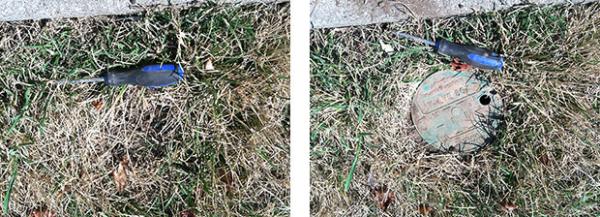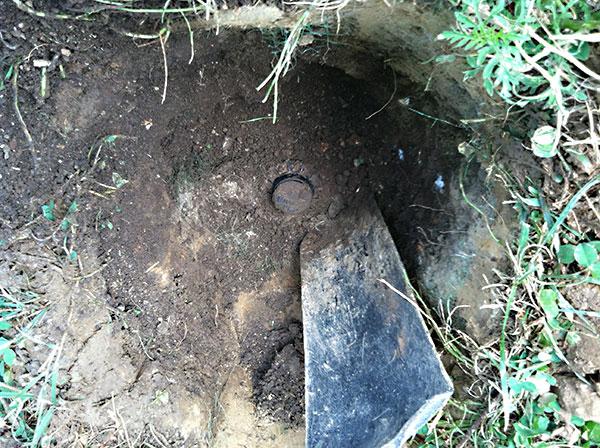Grounds Forensic Pathology
 From time to time in grounds maintenance things don't go according to plans. At these times it is common to hear the following sentiments: "What happened?" "What is it?" or one of my favorites, "I don't know what happened." When everyone is looking at you for an answer, the good supervisor becomes a forensic pathologist and detective, seeking evidence to solve a riddle. Through inquiry, experience, and logic, you can normally build a case and answer these questions to everyone's satisfaction.
From time to time in grounds maintenance things don't go according to plans. At these times it is common to hear the following sentiments: "What happened?" "What is it?" or one of my favorites, "I don't know what happened." When everyone is looking at you for an answer, the good supervisor becomes a forensic pathologist and detective, seeking evidence to solve a riddle. Through inquiry, experience, and logic, you can normally build a case and answer these questions to everyone's satisfaction.
Problems
Problems in a landscape come in many guises and many situations. Disease and insects, breakage and damage, and even improper procedure can all cause a lot of trouble. Sometimes we will be called upon to determine what is happening, why it is happening, and how it happened. Understanding the forensic process will go a long way to minimizing what could otherwise become bigger problems and headaches, taking valuable time and resources away from more productive activities.
Is There a Problem?
Determining the presence of a problem is usually pretty easy. A plant is dying or doesn't look right. A piece of equipment is not mowing properly or sounds rough. Water is bubbling up from the ground in area that is normally dry. All of these are sure signs something is amiss. For disease and insects, IPM dictates that a threshold must be crossed in order to necessitate treatment. Thresholds affecting equipment and irrigation problems are usually more straight-forward. They either work properly or they don't. Regardless of how obvious a problem seems, there may be something deeper at play.
Dig Deeper
Problems manifesting in the landscape may obscure what really caused the issue in the first place. One of the first turf diseases I ever faced was Brown Patch. This is a common problem that almost all turf managers have had to deal with. Unfortunately, the obvious yellowing, dying turf looked like any one of a number of common turf problems. Digging deeper for clues, I found the telltale mycelia and necrosis patterns on the grass blade. To be sure though, I contacted my Extension Agent and sent samples to Missouri University Crime (Turf) Lab. My diagnosis was confirmed and treatment was commenced. Digging deeper still, I determined some of my cultural practices could be modified to diminish recurrence.

Things may not be as they appear on the surface...
Uncover Evidence
Irrigation is an issue that commonly requires looking for evidence to locate the problem. First inspection can be misleading because water can travel in unusual ways. And if there are no accurate as-builts, you can really be lost. I recently was starting a system I had taken over for the first time. I had a wet spot that seemed to be coming from a pipe break. As I dug out the area, I still couldn't locate the break or the pipe, but there was a lot of mud and water. I felt the eroded hole underground and probed for the break with my hand, feeling strong water flow on and off. To my surprise I found a buried rotor that was running properly, only 18" too deep. My assumption of a break was not correct. Uncovering evidence gets to the root of the problem.

Digging into the situation may yield surprising results.
Accident Reconstruction
One of my all-time favorites was an accident reconstruction involving a worker. It started when I needed to use our push mower. Upon starting the mower, it shook so bad I couldn't use it. I called the worker who had used it last and asked him what was wrong with it and he said it was fine when he was using it. The blade was mounted correctly and was not bent, however pulling the recoil showed the shaft was bent. Again I asked the worker if anything had happened and he said he hadn't hit anything. I knew the area he had mowed so I went to inspect it. A scalped area near a small tree stump showed exactly where he had hit the stump and scalped when he restarted the stalled mower. Many other mower problems manifest in scalped, scalloped, or poorly mowed grass. By reconstructing what happened in the field, problems can be identified.
Put It All Together
Grounds managers are experts at determining problems with properly gathered evidence and clues. Taking the extra step to verify your findings can be greatly beneficial. Your first guess may be right, but might also be made without an essential piece of the puzzle. Keep digging until you find the right answer. Solving grounds mysteries is very satisfying.



0 Comments
Recommended Comments
There are no comments to display.